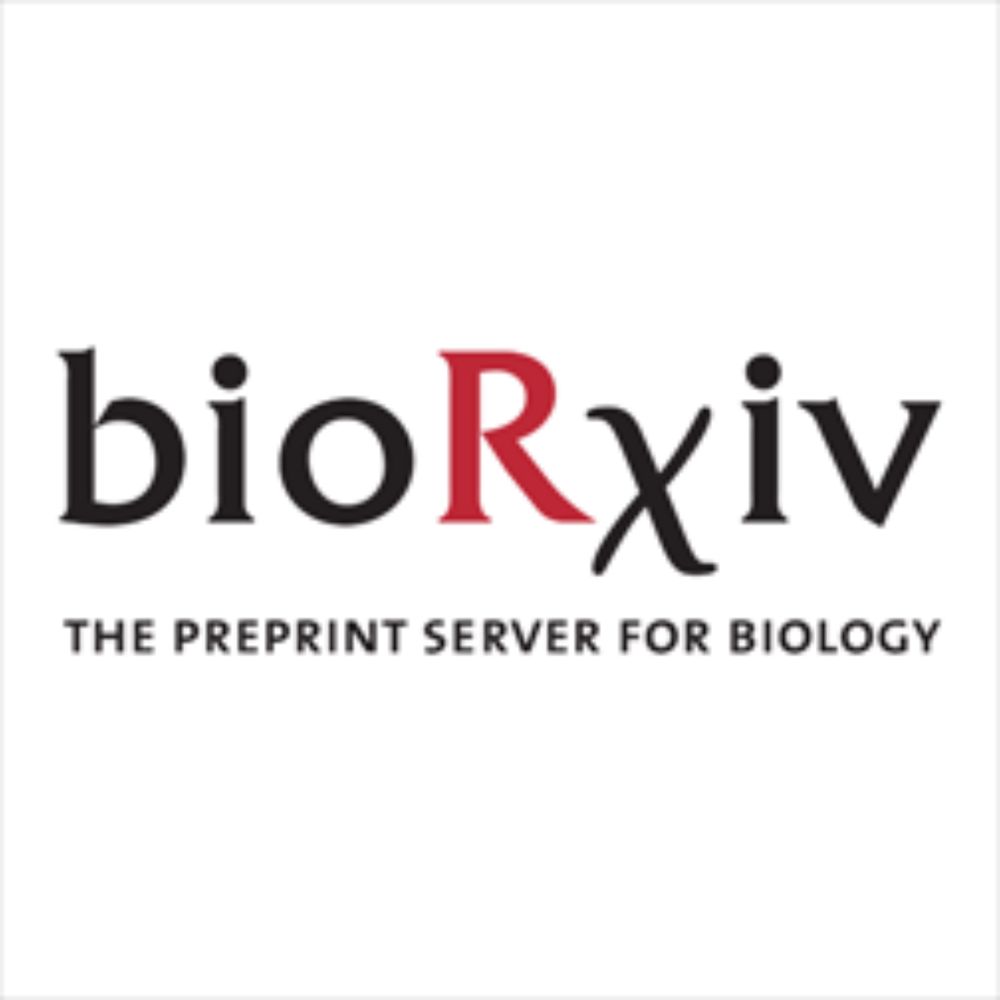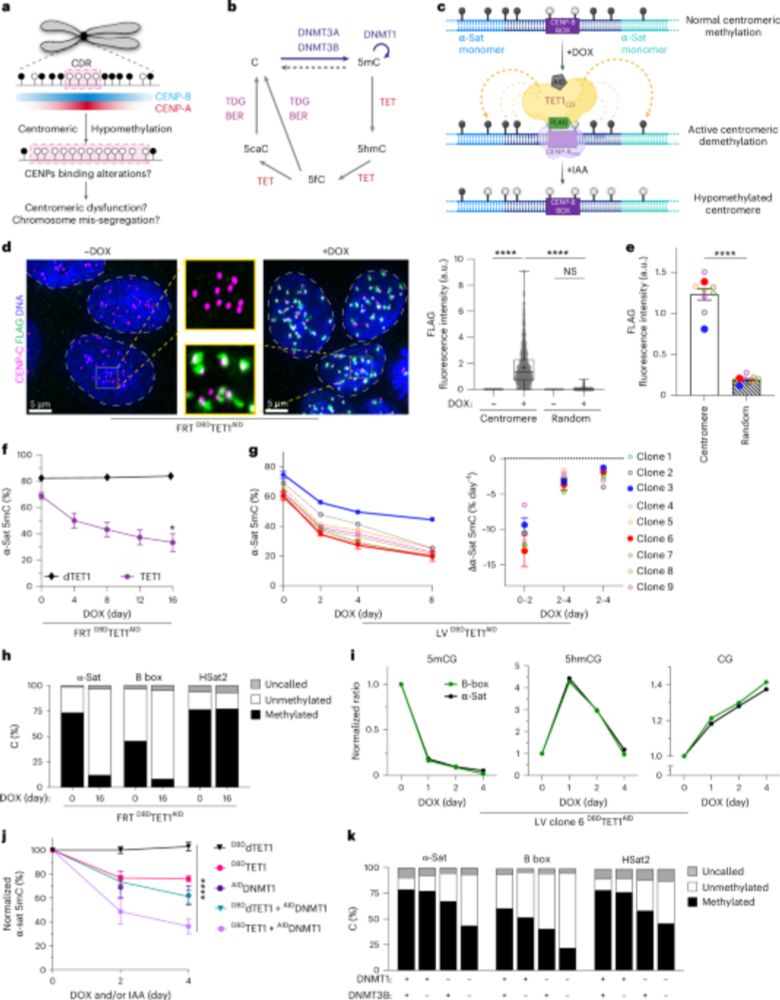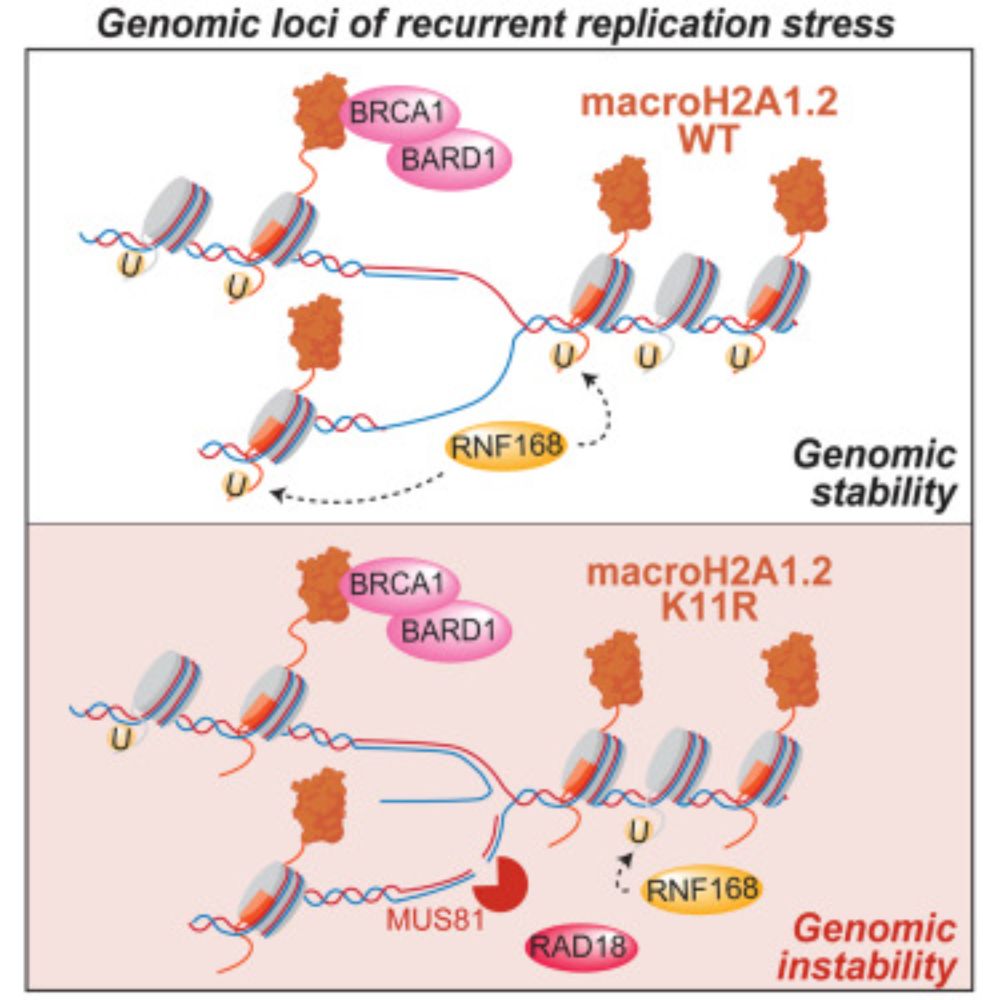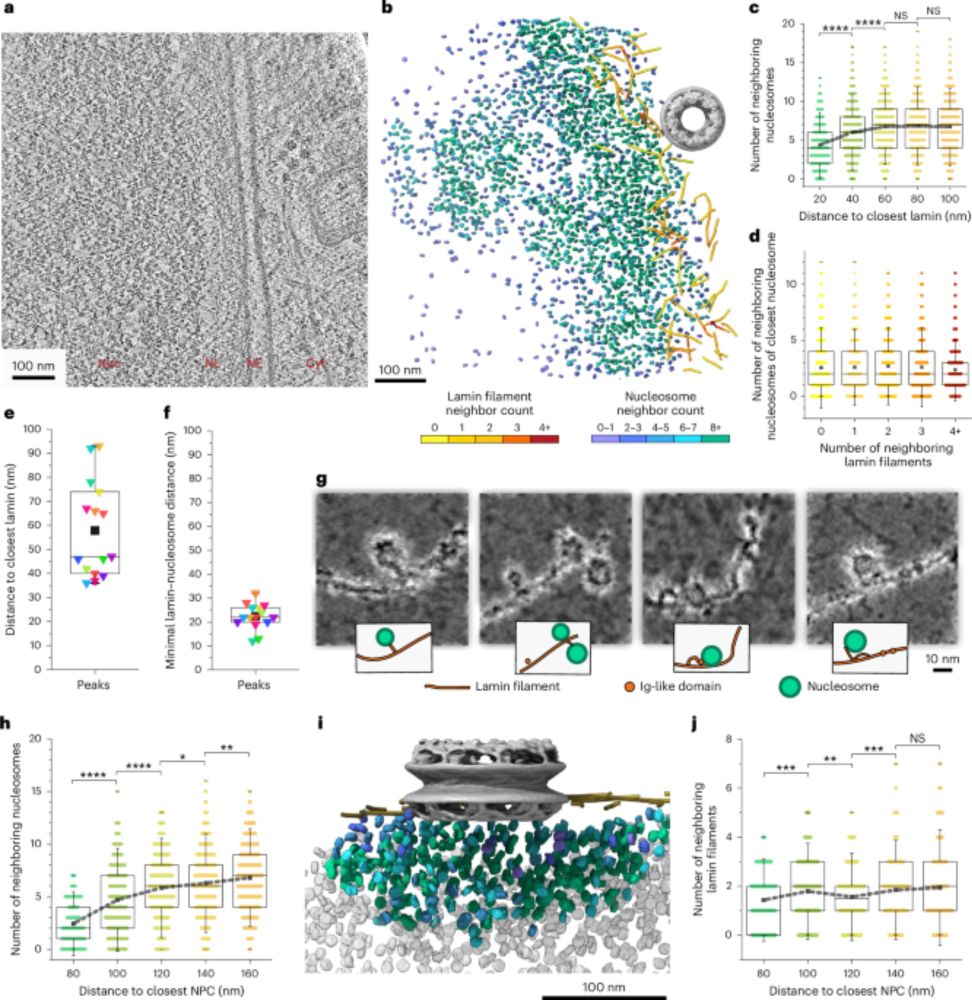...and the DNA becomes left-handed
11.12.2025 19:16 — 👍 0 🔁 0 💬 0 📌 0The Lewis Lab
@peterlewislab.bsky.social
Chromatin biochemistry and genomics in development and cancer. UW-Madison School of Medicine and Public Health TheLewisLab.net
@peterlewislab.bsky.social
Chromatin biochemistry and genomics in development and cancer. UW-Madison School of Medicine and Public Health TheLewisLab.net
...and the DNA becomes left-handed
11.12.2025 19:16 — 👍 0 🔁 0 💬 0 📌 0Our Science paper is out!
Huge congratulations to @huabin-zhou.bsky.social, Mike Rosen, and the brilliant @janhuemar.bsky.social @juliamaristany.bsky.social and @kieran-russell.bsky.social from our group
News: bit.ly/4avnkAr and bit.ly/3XBGVHS
Great perspective by @vram142.bsky.social +K Zhang

Very proud to have our latest work now online in
@natsmb.nature.com. A wonderful team effort across the centromere community, across @jansenlab.bsky.social @naltemose.bsky.social @dfachinetti.bsky.social and Giunta labs. Happy reading! 1/4
www.nature.com/articles/s41...

How to keep in step when your (protein) partner speeds up…
Here we investigated the adaptive remodeling of a protein-protein interaction surface essential for telomere protection.
Congrats to whole team!
www.science.org/doi/10.1126/...

New work from Tahirov x Lim collaboration! @qixianghe.bsky.social from my lab contributed the cryo-EM structures for this work. We are excited to help explain how anti-HSV drugs work and to guide their future development.
www.science.org/doi/10.1126/...
@unmc.bsky.social @uwbiochem.bsky.social
1/ 🚀 AEBP2 isn’t what we thought.
You were told that AEBP2 promotes PRC2 activity on chromatin.
We found the opposite: the most prevalent AEBP2 isoform inhibits PRC2 activity.
👉 surl.li/cgwqcq
A thread 🧵

Our paper in Science is out! @souravagrawal.bsky.social, @rlynn.bsky.social, @susvirkar.bsky.social, and the rest of the team show human RPA is a telomerase processivity factor essential for telomere maintenance. This reshapes our thinking about telomerase regulation. www.science.org/doi/10.1126/...
30.10.2025 22:07 — 👍 122 🔁 41 💬 10 📌 5
Now out in Science! Cyclin-dependent kinases (CDKs) are key regulators of the cell cycle. In @vcushing.bsky.social's magnum opus, we use #cryoEM to figure out how the CDK-activating kinase recognises CDKs to fully activate them - a key step in cell cycle control.
www.science.org/doi/10.1126/...

Today I am so pleased to present our work on how chromatin remodelers affect mesoscale chromatin organization.
www.science.org/doi/10.1126/...

How do flexible regions of histone chaperones team up to handle histones? Together with Fred Winston’s lab
@harvardmed.bsky.social, we reveal new insights in our study just out in Mol Cell. Hats off to James Warner and Vanda Lux @iocbprague.bsky.social for their key contributions! dlvr.it/TNB145

Requirements for establishment and epigenetic stability of mammalian heterochromatin.
www.cell.com/molecular-ce...

Some (+)ve news to lighten another heavy weekend: our latest preprint (c/o Mattiroli + Ramani labs) is up!
www.biorxiv.org/content/10.1...
A tour-de-force by 1st authors Bruna Eckhardt & @palindromephd.bsky.social, focusing on chromatin replication. RTs welcome; tweetorial in 3,2...(1/n)
Thrilled that our work is now finally out in Nature Comms!
rdcu.be/eG3vP
We reveal cryo-EM structures of the MRN complex bound to DNA & TRF2 - showing how DNA breaks are sensed and regulated at telomeres.
Fantastic work by first authors @yilanfan.bsky.social @filizkuybu.bsky.social & Hengjun!

Very interesting new @wbickmor.bsky.social commentary on the mechanistic mystery that is very distal enhancer-promoter interactions www.nature.com/articles/s41...
17.09.2025 12:43 — 👍 46 🔁 15 💬 0 📌 1
Very excited to share an excellent review from @teresa-urli.bsky.social, published one week before her PhD defense! We did a deep dive into the fascinating biology of the variant Polycomb complex, PRC1.6 (1/5) journals.plos.org/plosgenetics...
15.09.2025 19:03 — 👍 91 🔁 35 💬 3 📌 2
E. coli transcription factors regulate promoter activity by a universal, homeostatic mechanism | Science www.science.org/doi/10.1126/...
11.09.2025 19:19 — 👍 12 🔁 6 💬 0 📌 2
Figure I. Origins of transposable element (TE)-encoded and TE-derived proteins in cancer.
"Unmasked: transposable elements as drivers and targets in cancer"
by Ting Wang & colleagues
"This review synthesizes a growing body of work that positions TEs as both catalysts and antagonists of the tumor state."
Check it out!
authors.elsevier.com/sd/article/S...
Excited to share my postdoc work, out on bioRxiv today! Histones package DNA into nucleosomes to form the building blocks of chromatin, but how modular and programmable is this system? 1/9
11.09.2025 19:55 — 👍 85 🔁 32 💬 1 📌 2
How can we understand the earliest events in evolution of eukaryotic immunity? @yao-li.bsky.social reports incredible molecular fossils of complete bacterial-like operons in eukaryotes that illuminate how animal immunity was first acquired from anti-phage defense
www.biorxiv.org/content/10.1...

New preprint from my lab! We describe how transposable elements are activated in Parkinson’s disease, which is linked to an interferon response. We believe this study significantly advances our understanding of transposons and their role in human brains.
www.biorxiv.org/content/10.1...

#1 Centromeres are epigenetic loci defined by CENP-A, positioned in unmethylated DNA flanked by highly methylated regions. Our work, published in @natgenet.nature.com in collaboration with @naltemose.bsky.social investigates the role of DNAme at human centromeres www.nature.com/articles/s41...
04.09.2025 13:10 — 👍 85 🔁 36 💬 9 📌 1
Delighted that our work on EZH2 dominant negativity in Weaver syndrome is now out in Genes & Development!
This exciting work on chromatinopathies 🧬 was in collab with @adrianbracken.bsky.social and spearheaded by Orla Deevy.
@ucddublin.bsky.social @ucd-sbbs.bsky.social
www.ucd.ie/newsandopini...
New paper on the role of H3K4me3 at enhancers! We (led by Haoming Yu) used dCas9 epigenome editing to add H3K4me3 to intergenic enhancers. This was (1) sufficient to turn up transcription at open, active regions and (2) has no effect on target gene transcription. genesdev.cshlp.org/content/earl...
20.08.2025 01:28 — 👍 84 🔁 33 💬 3 📌 1
I am very excited to share the newest paper of the lab, a huge amount of work led by our talented PhD student Maxime Galloy, in close collaboration with Andréanne Blondeau, our dedicated research assistant for 10 years! 🙌
www.cell.com/molecular-ce...
I am thrilled to share with you my first co-corresponding author Nature paper with Jos Jonkers. This project was led by the extraordinary @sarahmoser.bsky.social . Congratulations, and thank you to all the authors, @nkinl.bsky.social , and @oncodeinstitute.bsky.social for their support.
13.08.2025 15:57 — 👍 30 🔁 5 💬 4 📌 0
The summer has been busy! Along with the move and a PhD defense, we have updated two preprints:
www.biorxiv.org/content/10.1...
www.biorxiv.org/content/10.1...
What better way to launch our new account with the publication of @jmstein.bsky.social latest paper from the lab! 🧪 Check out the 🧵 below to learn more about tkPAINT and how we use it to image proteins, DNA, and RNA in the nucleus using DNA-PAINT.
13.08.2025 18:16 — 👍 28 🔁 10 💬 1 📌 0
Epigenetics Update - The molecular basis of lamin-specific chromatin interactions go.nature.com/3GRXydB
Chiara Lanzuolo (INGM) and Ohad Medalia (University of Zurich) reporting in NSMB
#Epigenetics #Chromatin #Lamin
---
Gain deeper insights into gene regulation; epigenometech.com

Excited to share our latest preprint. www.biorxiv.org/content/10.1.... Lead by Lukas, we investigated multiple ways of assessing a TF's sensitivity to chromatin based on genome-wide binding profiles. The developed methods allowed us to quantify chromatin sensitivity across tested TFs.
12.08.2025 08:32 — 👍 43 🔁 12 💬 1 📌 0By contrast, removing the SUZ12 NBD yields an RNA-poor PRC2 that spreads H3K27me3 broadly in the genome, creating a massive low-level methylation background that decoys PRC1 away from its canonical targets- a global shift in mark abundance that doesn’t happen in the BRG1 setting.
13.08.2025 23:04 — 👍 1 🔁 0 💬 0 📌 0